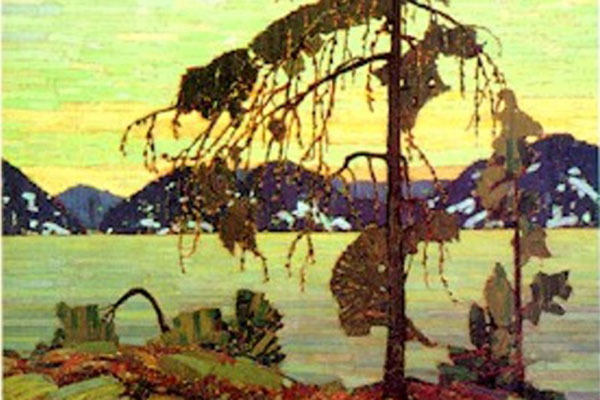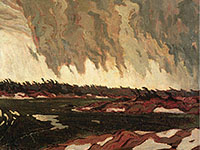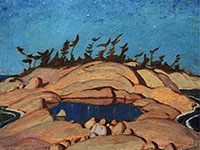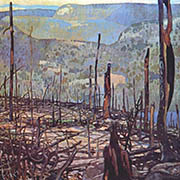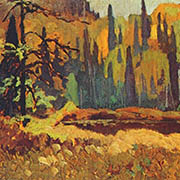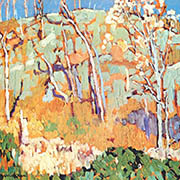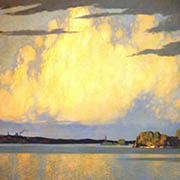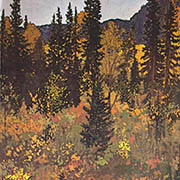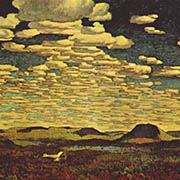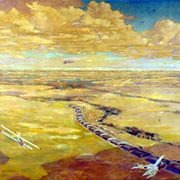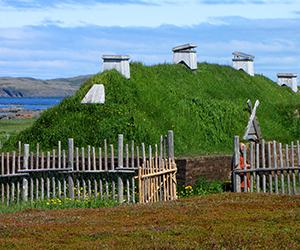CANADA HISTORY - Culture-Group of 7
Franklin Johnston
Franklin Johnston, whose name might not immediately ring with the familiarity of some of his contemporaries, was nonetheless a pivotal figure in the shaping of Canadian art in the early 20th century. Born on June 13, 1888, in Toronto, Johnston’s early life was one of contrasts. His upbringing in a bustling, growing urban center like Toronto stood in stark contrast to the untouched wilderness that would later become the focus of his greatest works. He was raised in a family that encouraged his creativity, but like so many artists of his generation, Johnston’s path to professional recognition was neither smooth nor straightforward.
From an early age, Johnston displayed an innate talent for drawing and a keen interest in the natural world. His sketches as a child hinted at a love for landscapes and a fascination with the way light played upon the surfaces of everyday scenes. After finishing school, Johnston pursued formal art education at Central Technical School in Toronto, where he honed his craft in drawing and design. However, his thirst for knowledge and his desire to refine his artistic vision soon led him to travel abroad. In 1909, like several of his fellow future members of the Group of Seven, Johnston traveled to Europe to further his studies. His time in Europe, particularly in Paris and Belgium, exposed him to the modern movements of the time—Post-Impressionism, Fauvism, and the evolving avant-garde currents that swirled around the heart of the art world. Johnston was deeply affected by the innovations of artists like Cézanne and Van Gogh, and he began to experiment with bold colors and expressive brushstrokes, seeking to find his own voice in this new and vibrant artistic language.
Returning to Canada in 1912, Johnston found that the artistic climate at home was far more conservative than what he had experienced abroad. Canadian art, at the time, was dominated by European-inspired academic styles, with a focus on portraiture and pastoral scenes. Johnston’s work, with its bold use of color and its emphasis on the emotional and spiritual qualities of the landscape, did not immediately find favor with the establishment. Nonetheless, his persistence and passion soon brought him into contact with a group of like-minded artists who, like Johnston, sought to break away from the constraints of traditional art and create something uniquely Canadian.
It was through his work as a commercial artist at Grip Ltd., the now-famous design firm in Toronto, that Johnston found his creative allies. Grip was more than just a workplace; it was an incubator for some of Canada’s greatest artistic talents. It was here that Johnston met artists like J.E.H. MacDonald, Arthur Lismer, and Franklin Carmichael, who, along with Lawren Harris, A.Y. Jackson, and others, would eventually form the Group of Seven. This collective would go on to change the course of Canadian art, but in these early years, they were simply a group of men united by their love of the Canadian wilderness and their desire to portray it in ways that had never been done before.
Johnston’s contribution to the Group of Seven cannot be understated. He was one of the founding members, and his work was central to their vision of creating a national art that reflected the rugged, untamed beauty of the Canadian landscape. Unlike some of his peers who focused on the grandeur of the northern wilderness, Johnston’s work often captured the more serene and intimate aspects of the landscape. His paintings of lakes, forests, and rolling hills were imbued with a quiet intensity, a sense of reverence for the land that reflected both his technical skill and his deep emotional connection to his surroundings.
One of Johnston’s most celebrated works from this period is The Fire Ranger (1920), a painting that exemplifies his mastery of light and atmosphere. The work depicts a lone figure standing watch over a forest landscape, the trees bathed in the soft glow of twilight. The colors are rich and vibrant, yet there is a subtlety to the composition that draws the viewer into the scene, inviting them to experience the stillness and solitude of the moment. Johnston’s use of color and light in this painting is typical of his best work, where he blends realism with a heightened emotional resonance, capturing not just the physical beauty of the land but its spiritual essence as well.
Although Johnston was deeply committed to the ideals of the Group of Seven, his path eventually diverged from that of some of his peers. In 1924, he left the group, feeling constrained by the collective’s focus on the landscape as the primary subject of their work. Johnston, ever the restless spirit, sought to explore new subjects and techniques, and he began to experiment with portraiture, still lifes, and industrial scenes. His later works, such as The Rock Cut, Lake Superior (1924), display a more refined and individualistic style, marked by an increased focus on the human presence within the landscape. Johnston was fascinated by the ways in which people interacted with and shaped their environment, and this theme became increasingly prominent in his work during the 1930s.
By the 1930s, Johnston had become one of Canada’s most respected artists. His paintings, with their bold use of color and dynamic compositions, were celebrated for their ability to capture the spirit of the Canadian landscape in all its majesty and mystery. He was also a committed teacher, sharing his knowledge with a new generation of artists at the Winnipeg School of Art and the Ontario College of Art. Through his teaching, Johnston had a profound influence on the development of Canadian art, helping to shape the careers of many of the country’s most promising young artists.
In his later years, Johnston’s work continued to evolve. His color palette became more muted, his compositions more contemplative. Paintings like The Rapids (1938) reflect a growing introspection, as Johnston sought to capture not just the external beauty of the landscape but the deeper, more spiritual truths that lay beneath the surface. His later works are often marked by a sense of melancholy, a reflection, perhaps, of the challenges he faced in his personal life. Johnston’s marriage had been strained for many years, and his financial situation was often precarious. Yet despite these difficulties, Johnston remained committed to his art, painting until his death in 1949.
Franklin Johnston’s legacy in Canadian art is immense. He was not just a landscape painter but a visionary who helped to define what it meant to be Canadian in the early 20th century. His work, with its vibrant colors and dynamic compositions, captured the rugged beauty of the Canadian wilderness in a way that had never been done before. But more than that, Johnston’s paintings conveyed a deep emotional connection to the land, a sense of reverence and awe that resonated with Canadians across the country. For Johnston, the landscape was not just a subject to be painted; it was a living, breathing entity, one that shaped and defined the people who lived within it. Through his work, Johnston helped to create a visual language that expressed the unique character of Canada, a country defined by its vast wilderness and the people who called it home.
In the decades since his death, Johnston’s work has continued to inspire new generations of artists. His paintings are celebrated not only for their technical brilliance but for the way they capture the spirit of Canada itself. In the end, Franklin Johnston was more than just an artist; he was a pioneer, a man whose vision helped to shape the course of Canadian art and define the national identity of a country still coming into its own. His work, like the land he loved, remains timeless, a testament to the enduring power of art to reveal the soul of a nation.


